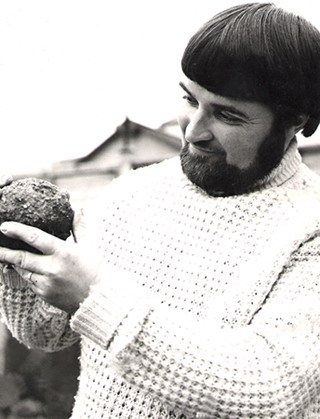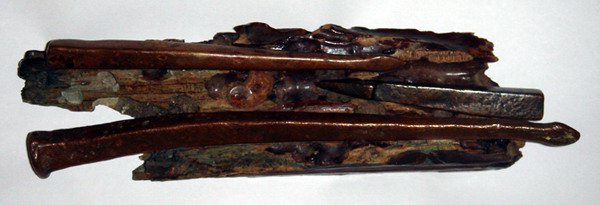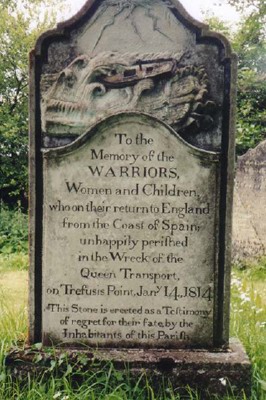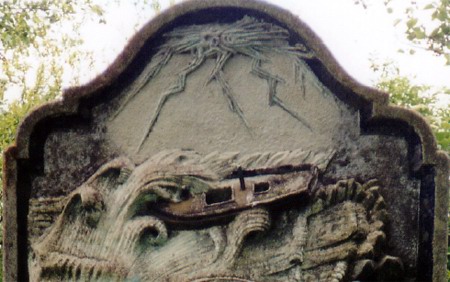This is a short
feature about a local Falmouth diver called Brian George who found a cannon ball
33 years ago when diving off Trefusis Point, Flushing. Nr Falmouth, Cornwall,
UK. Recently his son Steven George has gathered some extra information about
the ship called the Queen that Sank on the 14th January 1814 and has put all
the pieces together to give more history about his father's historic find.
|
 |
The original newspaper article.
Dated: 19th March 1974
Brian's Historic Find
Brian George, of 5 Agar Crescent, Illogan Highway saw what looked like a
piece of metal wedged between rocks when he went diving near Falmouth
last week.
He examined it more closely and found it was a cannon ball, rusting but
still recognisable.
Brian, who has been diving for 14 years and is an
ex-member of Falmouth Diving Club, believes the 15lb, cannon ball came
from an 1814 British troopship which sank in Falmouth Harbour after
being forced on the rocks in rough weather.
He made the find while diving off Trefusis Point, Flushing.
"I knew there was wreckage around there because two years earlier I
found some copper nails," he said.
Brian, who is married
with two ten - month - old twin sons, is keeping his find as a souvenir.
"I shall certainly go down there again, but at present the weather is
too rough," he added. |
Brain recalls
that day 33 years later
One early morning
around the second week of March 1974, I set off to Trefusis Point, Flushing to
dive on the old transport vessel called the Queen that was returning from the
Peninsula War, Spain just before it sunk in Trefusis Point. I dived down 30 feet
deep and explored the surrounding area hoping to find any remains of this
wrecked ship. After a short while I started to see a lot of wreckage on the sea
bed, I found a long piece of wood that was around 30 feet long. I managed to cut
off a piece of wood and when doing so I found a small cannon ball between some
rocks, also in this area were a lot of copper pipes.

Here you can see the nails that
Brian George found two years earlier, before discovering the
cannon ball and also the piece of wood at Trefusis Point, Flushing. nr Falmouth,
Cornwall, UK.
The nails were also examined by experts and was hand made around the 1600's.
Mylor
Churchyard
Just after Christmas 1813, the
Queen, under the command of Captain Carr, left Lisbon and joined a small convoy
bound for Portsmouth. There were over 300 people on board and they had a rough
passage, so it was with some considerable relief that they sighted Falmouth on
Jan 10th 1814, and anchored in Carrick Roads. Despite there being a strong
easterly wind and a forecast of more unsettled weather, the Captain only laid
out his port anchor with a much reduced length of cable. Even so she lay happily
there for three days until the afternoon of Thursday 13th, when she began to
drag her anchor. The watch on deck failed to notice what was happening at first,
and by the time they notified Captain Carr it was too late.
|

Memorial for the Queen transport vessel, which wrecked
at Trefusis Point, Cornwall, in 1814, killing over 200.
Located in the churchyard of St Mylor, Cornwall, UK. |

The
Monument reads as follows:
To the
Memory of the WARRIORS, Women and Children who on their
return to England from the Coast of Spain unhappily perished in the
Wreck of the Queen Transport on Trefusis Point, Jan. 14,1814.
This
Stone is erected as a Testimony of regret for
their fate by the inhabitants of this Parish. |
Also in Mylor Churchyard there's another Head stone that reads:
" In memory of Catherine, wife of
Lieut. Robert Daniell, 30th Regt. also their children viz. Margaret, Eleanor,
William, Robert and Edward Alexander, who unhappily perished in the wreck of the
' Queen' Transport on the awful morning of the 14th Jan. 1814. Leaving an
unfortunate husband and father to lament their loss to the end of his existence.
"
Also in a
near by town called Penryn there are also graves that point back to this
awful wreck:
Beneath this
stone, (placed by the inhabitants of Penryn as a memorial of the awful
dispensation) were interred in one grave the bodies of Twenty
shipwrecked strangers! These unfortunate persons, invalids and followers
of the British army in Spain, had recently arrived at Falmouth from
Lisbon, in the Queen Transport. Early in morning of January 14th, 1814,
during a violent snow storm the ship parted from her anchor, was dashed
in pieces on Trefusis Point.
The impresive
memorial
The starboard anchor had no cable secured to it, and while this was being
brought up, the Queen was being rapidly blown towards the shore. When
preparations were nearly complete, the port anchor gave up the fight, its rope
parted and the Queen was adrift at the mercy of the winds. As she sped across
the sea, the crew still valiantly struggled to get the starboard anchor ready,
the passengers started to panic screaming and shouting, and the whole enterprise
fetched up with a huge crash on Trefusis Point. As the Queen drove onto the
Point she broached- to, and huge waves smashed over her carrying all before them
and flooding the vessel from stem to stern.
In the confusion attempts were made to fire a cannon as a distress signal but
the sea swamped the cannons and by now heavy snow was falling making it almost
impossible for anyone to see the wreck from the shore. The Captain ordered all
the masts to be cut away, and as they fell the ship gave a sickening lurch which
caused guns to be cast adrift and bulkheads to break. As the hull gave way, all
below were either crushed to death or drowned. In less than twenty minutes of
striking Trefusis Point the Queen had been reduced to matchwood.
Some of the troops managed to scramble ashore but daylight revealed the true
horror of what had happened. Scores of bodies washed about in the shallows, many
entangled in the ships rigging. Others lay strewn around the rocks were the sea
had thrown them. Only eighty five soldiers, nine women, one child, and four
prisoners survived. Captain Carr and his entire crew except for the bosun and a
cabin boy, perished in the disaster. Some two hundred and fifty bodies were
eventually recovered, but not before the looters had been at them. A number of
the surviving troopers were eventually court martialed for robbing the corpses.
This page was
supplied by Steven George on behalf of his father Brian George.
Copyright © by
Diving Heritage 2007
mailto:info@divingheritage.com
- Last update: 10th May 2007



